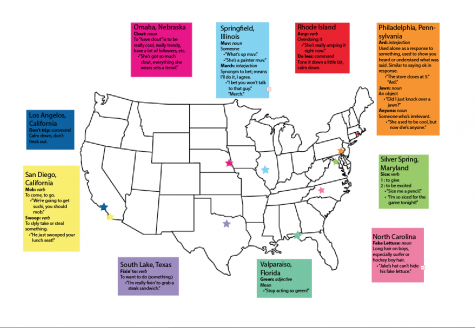What’s the Word?
Different teenage slang used around the country.
In his essay, “A Defence of Slang,” published in “The Defendant,” G.K. Chesterton, a poet, philosopher and journalist, said: “All slang is metaphor, and all metaphor is poetry. If we paused for a moment to examine the cheapest cant phrases that pass our lips every day, we should find that they were as rich and suggestive as so many sonnets.”
Although Chesterton seems to view slang as poetry, slang is often seen as a more unsophisticated lexicon. The Oxford Dictionary defines “slang” as “a type of language that consists of words and phrases that are regarded as very informal, are more common in speech than writing, and are typically restricted to a particular context or group of people.”
Slang is ubiquitous around societies and dialects, and has been for centuries: just like Shakespeare coined the word “fashionable” in his tragedy “Troilus and Cressida” published in 1602, Peaches Monroee invented the phrase “on fleek” in a vine in 2014. However, slang is used for different purposes. British lexicographer (a person who compiles dictionaries), Eric Partridge, claimed that slang is used in 15 different ways. According to Partridge, people use slang to be “different,” to enrich their language, to seem friendly, or potentially to show that one belongs to a certain school, trade, social class, or professional, artistic, or intellectual setting, as well as other reasons he outlined.
One thing that is for certain is that slang is not a universal language; the “Cambridge Encyclopedia of the English Language” says that “Slang is one of the chief markers of in-group identity,” which varies depending upon occupations, age generation, and especially locations. While maybe any one of the 42 million teenagers living in the United States right now could define the words “lit” or “exposed,” it might be hard to find someone outside of North Carolina who could describe what “fake lettuce” is, or someone not native to Philadelphia who could explain the meaning of “ard.”
The graphic below highlights the different slang used by teenagers living in different American towns all over the United States as told and defined by teenagers living in their respective towns.










